The Five “Poet Class Liners” - Page Two;
MS Taras Shevchenko, Shota Rustaveli & Mikhail Lermontov
Please Note: Firefox
and some other search engines are not suitable – Use “Internet Explorer” for this page to load perfectly!
With Reuben
Goossens
Maritime Historian, Cruise‘n’Ship
Reviewer, Author & Maritime Lecturer
Please
Note: All ssMaritime and other related maritime/cruise sites are 100%
non-commercial and privately owned. Be assured that I am NOT associated with
any shipping or cruise companies or any travel/cruise agencies or any other
organisations! Although the author has been in the passenger shipping industry
since 1960, although is now retired but having completed around 680 Classic Liners and Cargo-Passengers Ships features I trust these will
continue to provide classic ship enthusiasts the information the are
seeking, but above all a great deal of pleasure! Reuben Goossens.
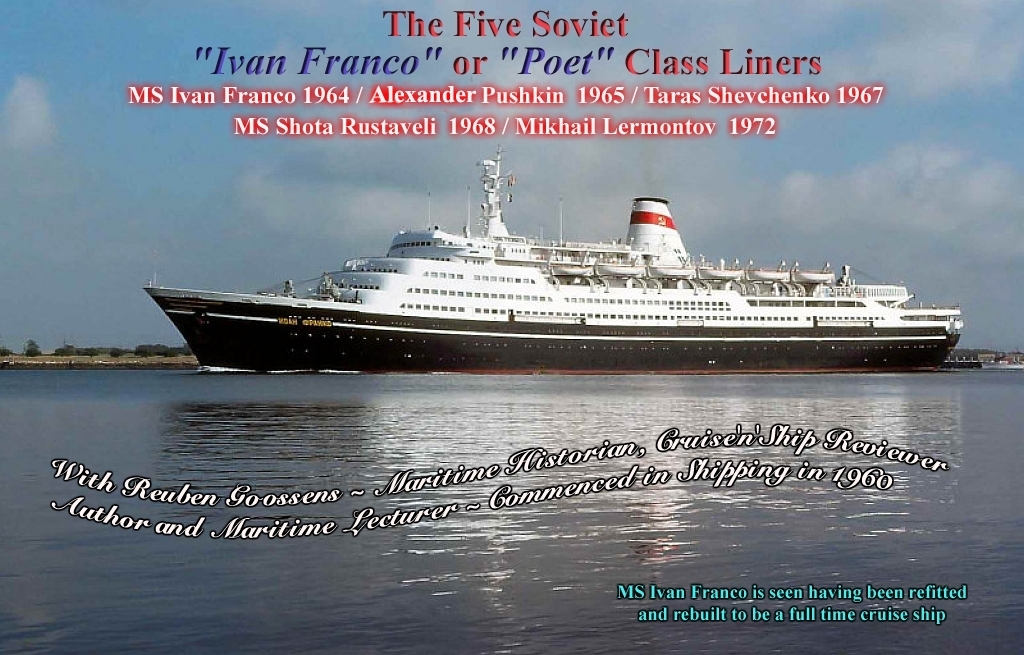
MS Taras Shevchenko, Shota Rustaveli & Mikhail
Lermontov
PLEASE NOTE: An Introduction to
the Five “Poet Class Liners
You will find that Page One has described in detail the interiors of these wonderful Russian Liners and Cruise Ships together with a good number of interior and exterior and deck photographs. In addition there is also a deck plan after their major refit and rebuild when their forward superstructures where brought forward and they became full time cruise ships.
Thus if you have arrived at this page via a search engine, please go to Page One first via the link above and when finished reading, you will find there is a link at the bottom of the page to return.
Ship 3
… MS
Taras Shevchenko:
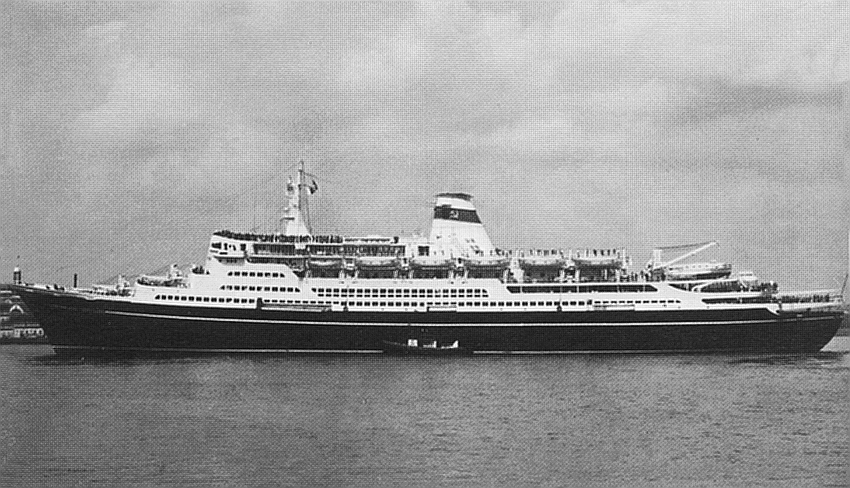
Voyages and Cruises to Australia
In 1975 she underwent her refit and rebuild
and when completed her tonnage was registered at 20,027 GRT. Now she, like her
sisters that had also been updated had new and enlarged lounges, such as the
magnificent Bolshoi Theatre located forward on Saloon Deck, being one of the
biggest changes, as well as many other vast improvements on board. She
recommenced cruising and proved to be a very popular ship indeed! This fine
ship would return again to
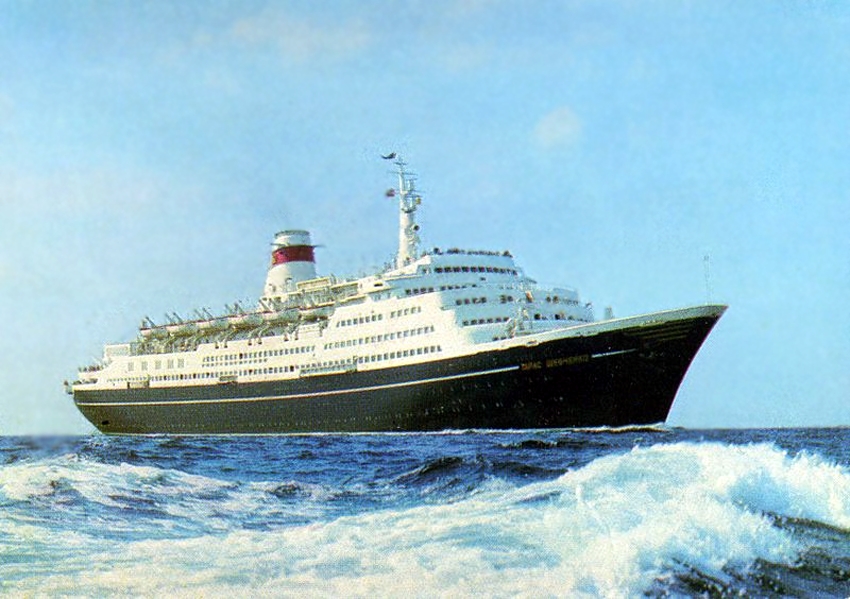
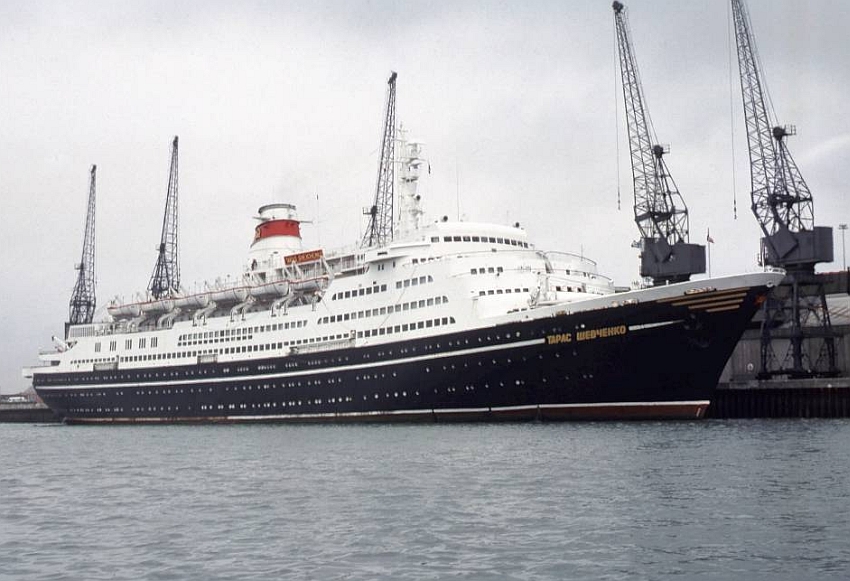
In the early 1980s the Taras Shevchenko
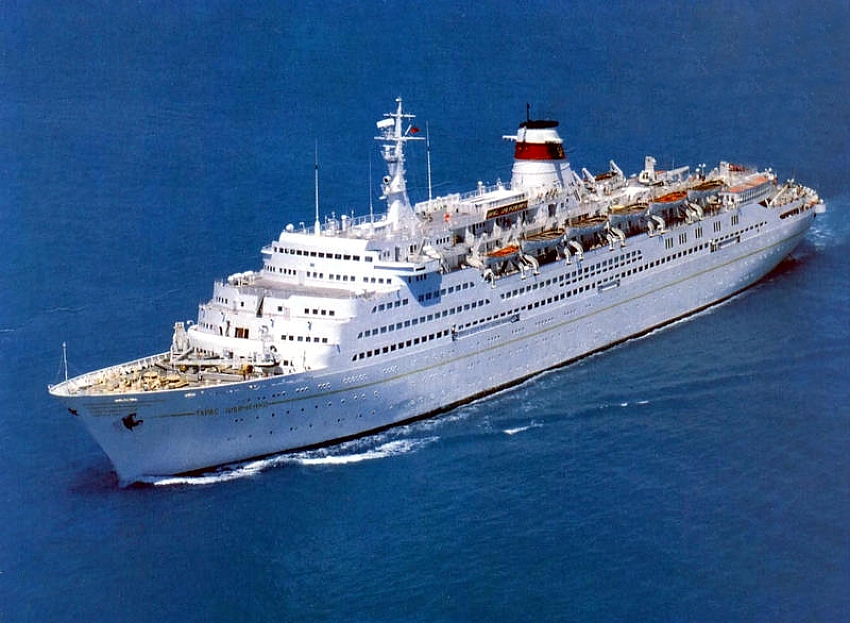
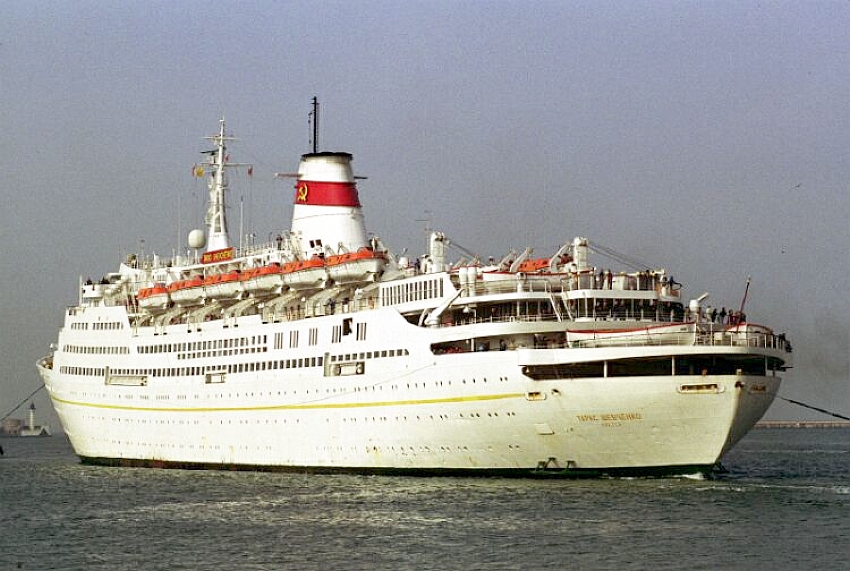
Her Final Days:
She was permitted to be moved to Ilichevskin (
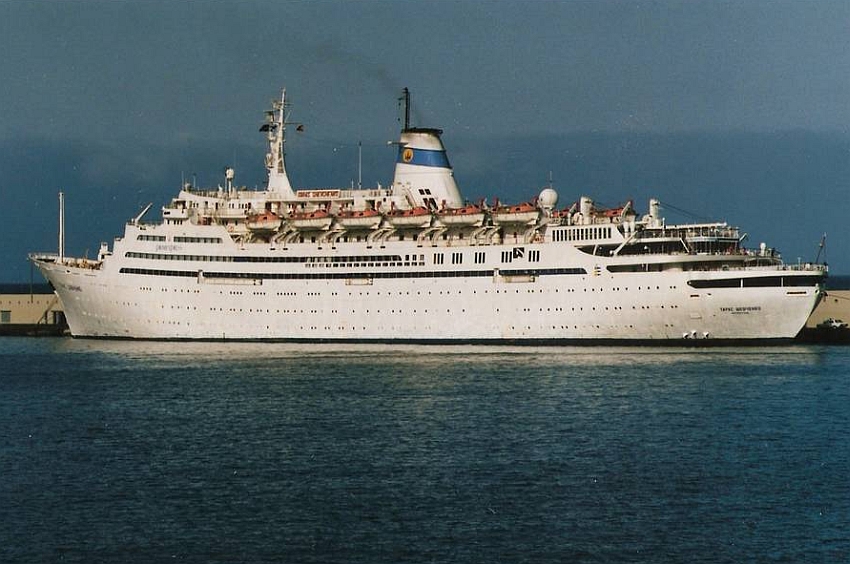
But
sadly within a year breaking up of this great ship would commence!
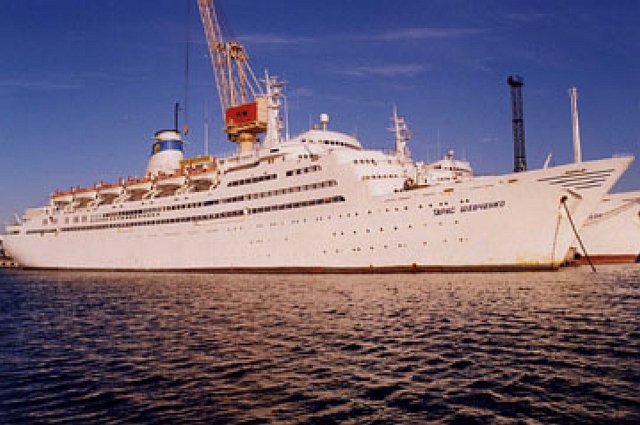
There is no doubt that this ship had become much loved ship by many around the globe for she had proved to be a fine cruise ship, just like her next sister the MS Shot Rustaveli!
***********************************
4 … MS Shota Rustaveli:
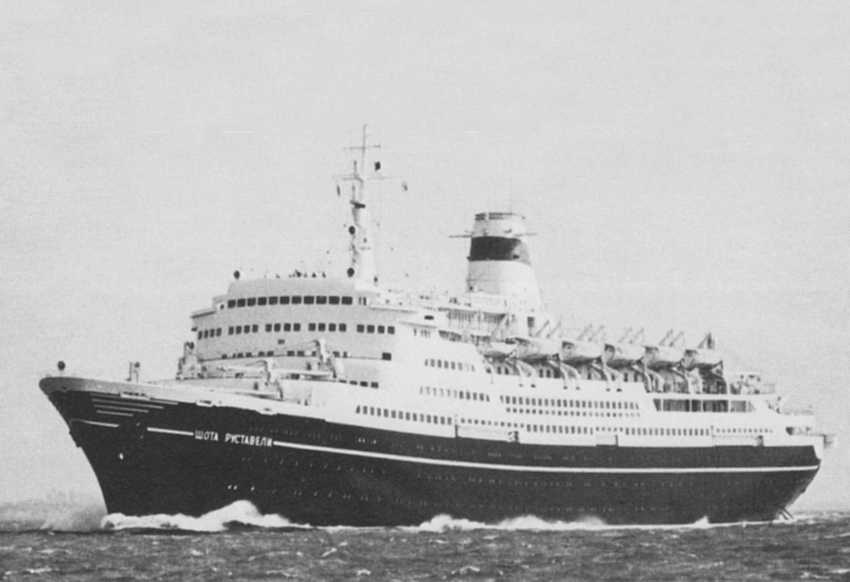
Here we see a very early view of the Shota Rustaveli
in her early days as built
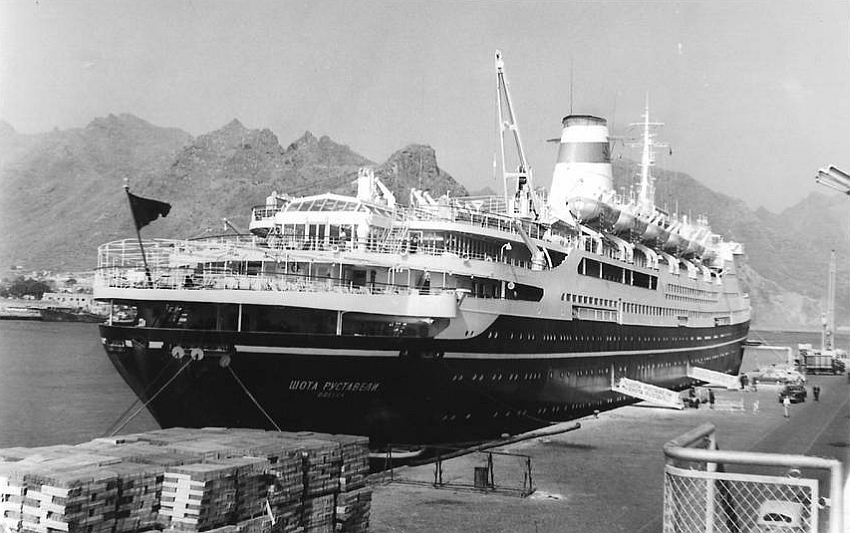
She departed Southampton on October 14, 1968
and first visited Auckland New Zealand and then arriving in
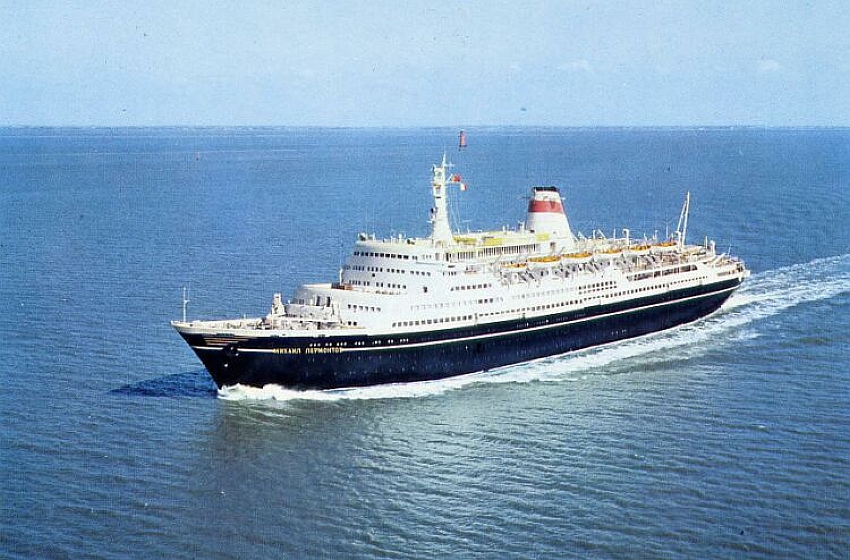
Shota
Rustaveli at sea
This first voyage turned out to be such a
success, the Charter Travel Club now also had an associate, CTC Lines and no
membership was required! Considering the name Shota Rustaveli had been
established Down under CTC Lines decided to use her again for the next voyage,
thus she departed Southampton on November 24, 1969, arriving in
The Shota Rustaveli would return to
Later in 1973 she was given an extensive refit that saw many excellent changes on board and her forward decks were extended, thus new lounges came about and cabins where vastly improved, as well as stabilisers where added. She was registered at 20,146 GRT.
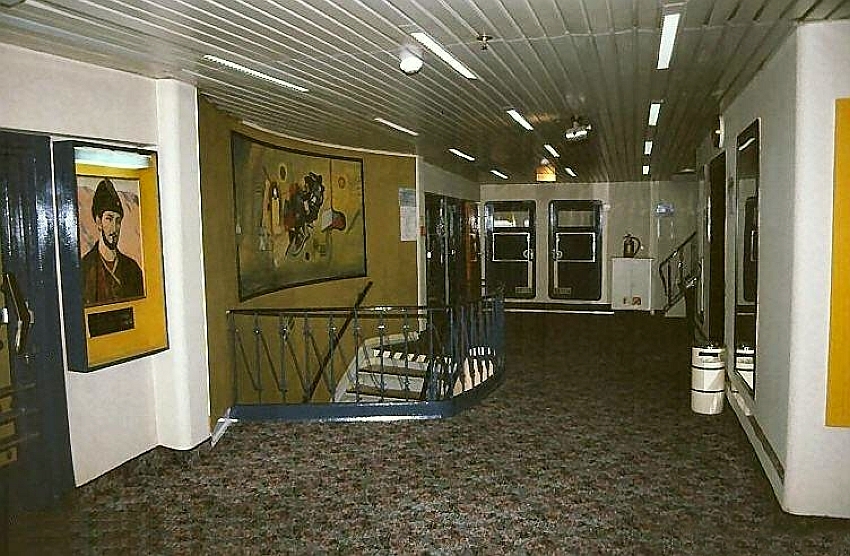
The
Promenade Deck Hallway
Original
photographer unknown - *Please see photo notes at bottom of page
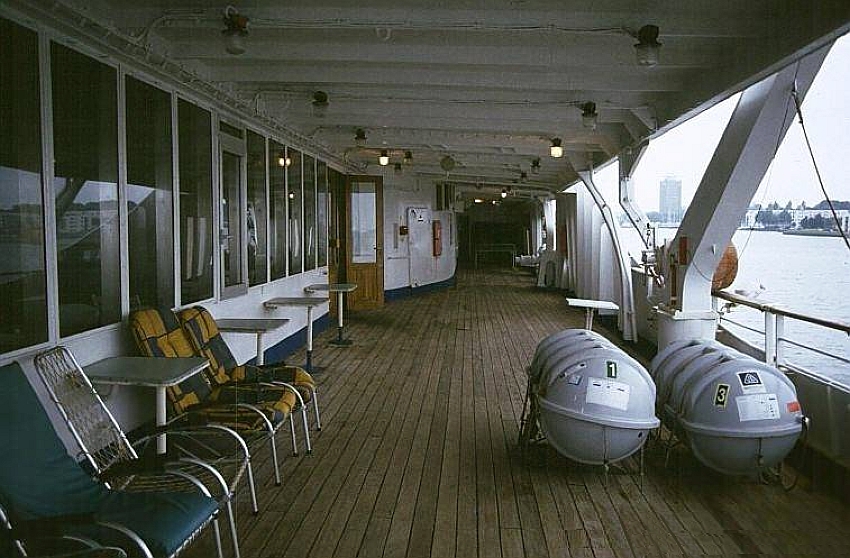
Promenade
Deck starboard aft of the ship, but looking forward
Original
photographer unknown - *Please see photo notes at bottom of page
With the Shota Rustaveli completed, she would
continue to cruise out of Southampton to the European popular regions such as
the Mediterranean and the
But Shota Rustaveli would soon return to
With CTC having proved to be such a huge
success it was decided that for the 1975-76 season, CTC would send two ships
Down under, the Taras Shevchenko and the Shota Rustaveli. As I had already
stated, up to this time she would sail via the
The fully booked MS Shota Rustaveli was loaded
with excited passengers, who where about to head off on a wonderful voyage of
discovery, one that had not been done before to Australia, and she departed
Southampton on a cold late afternoon November 5, 1975 heading for the Atlantic
and South America! Some of the ports called on were exciting places jus to name
two was
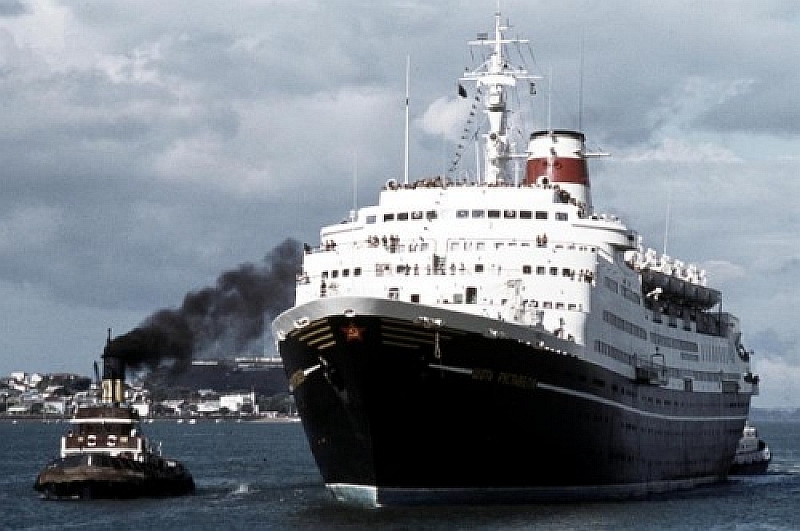
Shota
Rustaveli arrives in
Photograph by
& © Mike Cornwell
On arrival in
But no sooner had she returned to Southampton, Shota Rustaveli departed again in March 1977 on an around the world voyage, sailing to Australia via the Suez Canal and returning to the UK via Auckland and the Panama Canal, which was quite a big change for CTC!
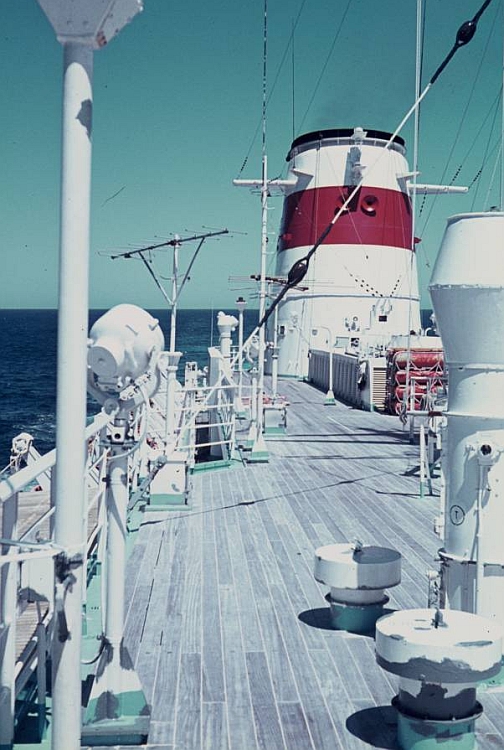
A
Great view aft topside
1978 would be the very last time that Australian’s
and our good KIWI friend would ever see the wonderful Shota Rustaveli again,
for it was to be her final visit to our shores! She departed Southampton for
her very last around the world voyage sailing again via the
And so it was, for in the early 1980s she taken out of service for a refit and have her aft decks extended, in addition she was painted all white and she certainly looked like a new ship! When completed the Shota Rustaveli continued her cruise duties right through the years and she served both the British and European public well, taking them to the warmer climates be it the exotic Islands in the Canaries and the Mediterranean, as well as the ever popular summer voyage of Scandinavia and the Baltic ports!
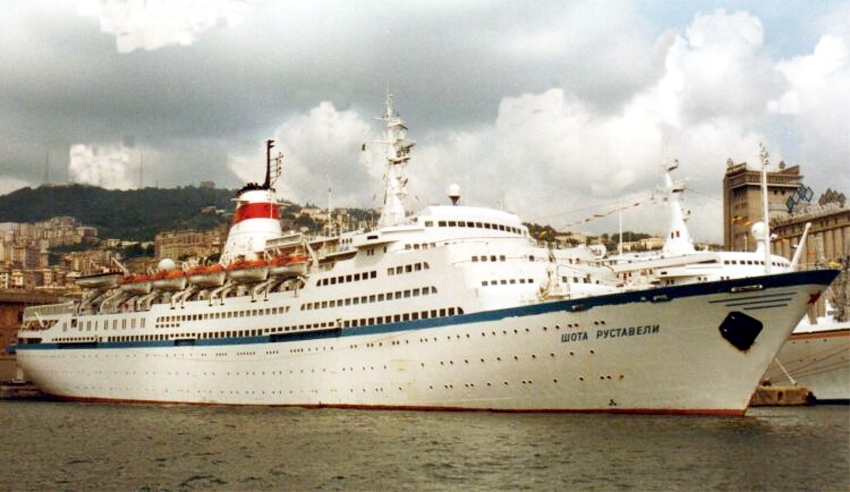
She
certainly looks like a superb gleaming white cruise ship!
But as the years slowly continued and newer ships arrived on the scene, offering far superior facilities and now offering excellent value for money, demand for the Russian ships began to fall rapidly in the 90s!
Thus having had many good years the excellent
Shota Rustaveli was eventually sold late in 1997 to Ocean Agencies Ltd,
Then in 2000, she was sold to “Kaalbye
shipping International” of
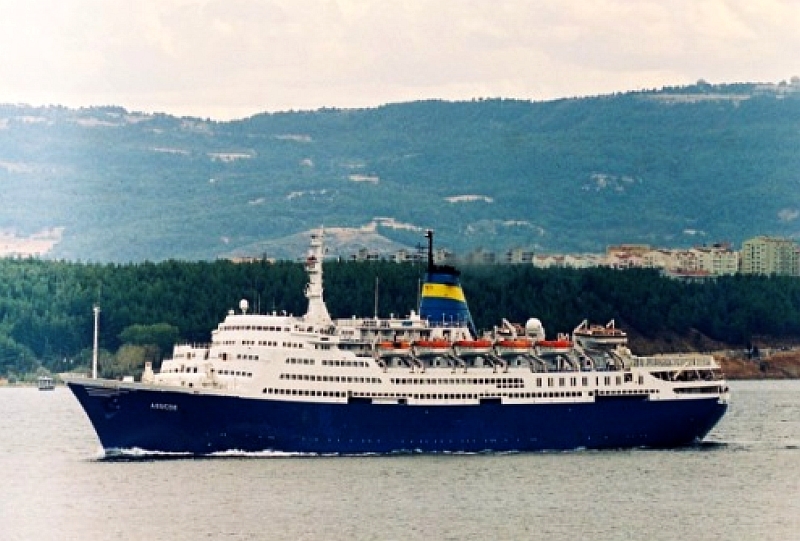
Here
we see the MS Assedo, now with a dark blue hull and funnel that also had a
broad yellow band on it
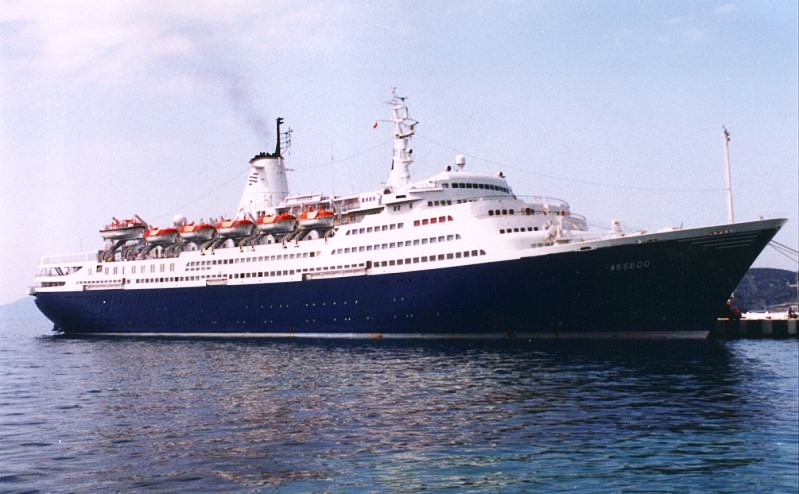
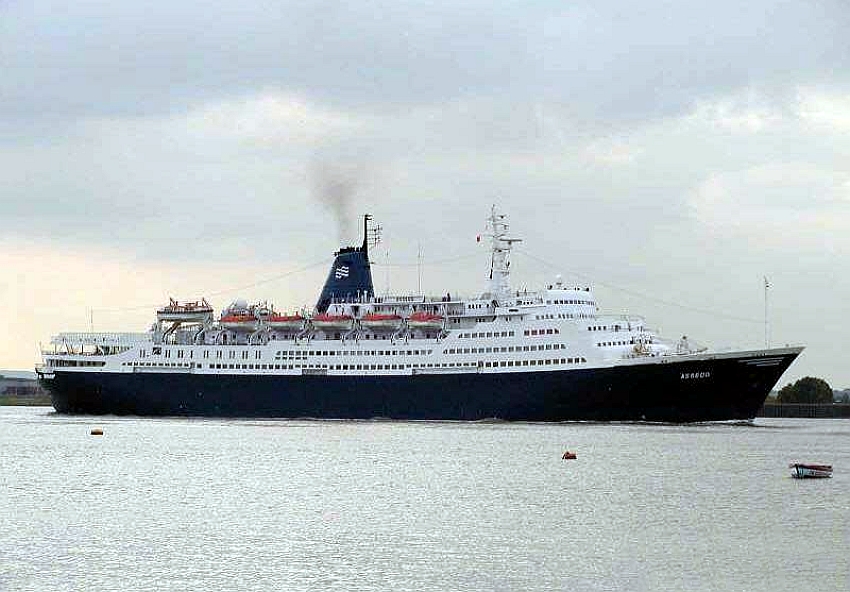
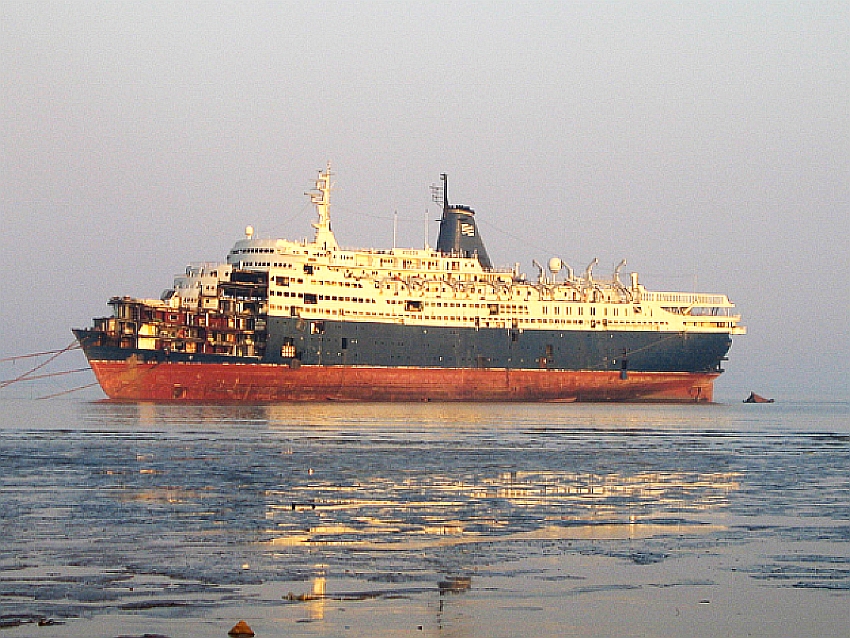
Here
we see the tragedy that is the MS Assedo, ex Shota Rustaveli on the beach at
Alang
Photograph was
taken by my good friend © Copyright Peter Knego
Visit www.midshipcentury.com for actual maritime
memorabilia direct from these ships as well as DVD’s
5 … MS Mikhail Lermontov:
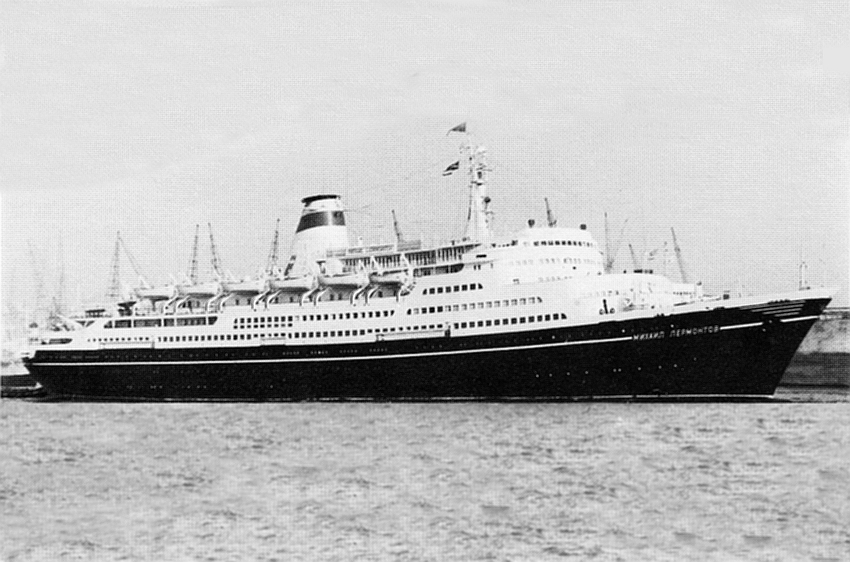
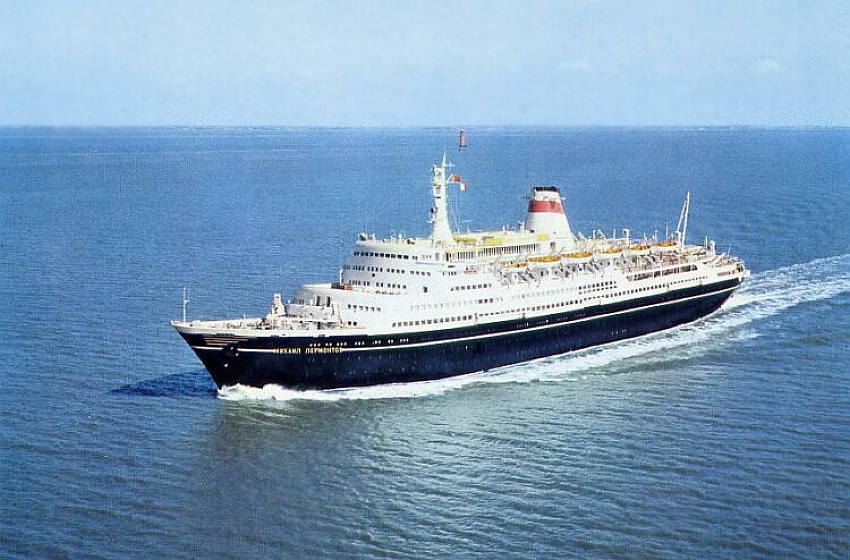
A
delightful colour postcard of the Mikhail Lermontov
Although the Mikhail Lermontov was completed
in 1972, it was most unusual that so many of her cabins did not have Private
Facilities. CTC Cruises chartered the “Poet” Class ships on a
regular basis and the Mikhail Lermontov obviously was one of them. She proved a
success like her sisters in the British market and soon she would become known
in
She made her very first voyage to
During the seventies she did receive ongoing
upgrades, but to make her more suitable as a viable cruise ship it became
obvious that more had to be done. Thus in order make her more suitable to
become a successful full time cruise ship to the world, the Soviets decided to
spend a good US$15 million in 1982 and completely update her with a massive
refit/rebuild that saw changes to her decks, as well as a comprehensive
interiors refit. One of the most important tasks was to ensure that every
single cabin would be fitted with Private Facilities, and also to have all the
public rooms, some of which had been extended, and other areas, to be
completely redecorated and refurbished. To complete the transformation to paint
the ship in cruising all white.
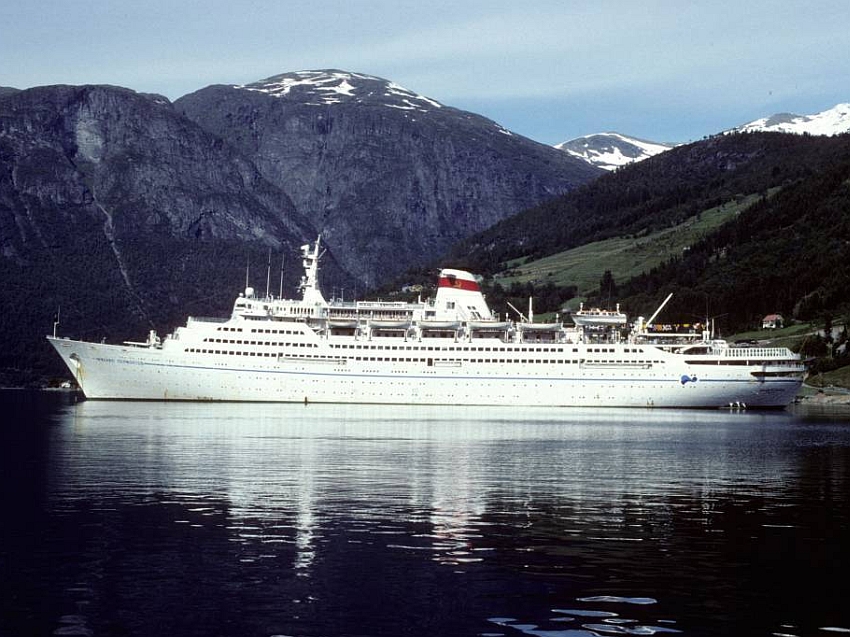
Here we see this fine ship in her new guise after her
rebuilding and refit
She retuned to her cruise duties and the
public loved the all-new ship as she was a delight, the cabins were so much
lighter and brighter, and the bathrooms were certainly most welcome! The
lounges and other venues were a pure delight, whilst somewhere just fun and
happy places. On Saloon Deck starting from forward was the grand two story
“Bolshoi Lounge,” followed by the forward “Lounge
Lobby.” Next on starboard side was the “Astoria Bar,” whilst
portside was the popular “Nevsky Bar,” this was followed by the
amidships Lobby that had a door going out on portside to the
“Wintergarden,” as well as a short hallway to the
“Cinema” just aft portside. On the starboard was the main hallway
with the shops and the “Sadko Bar” that led to the aft Lobby where
you could enter the “Library” port forward,
“Hairdresser” port aft and the “Barber” Starboard aft,
doors led out to the part glass enclosed and covered promenade deck. Aft was
the location of the swimming pool and its own bar located forward of it the
delightful “Neptun Bar.”

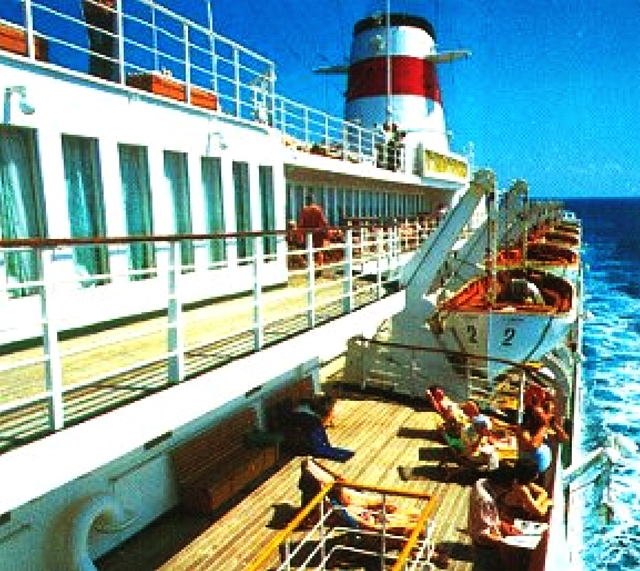
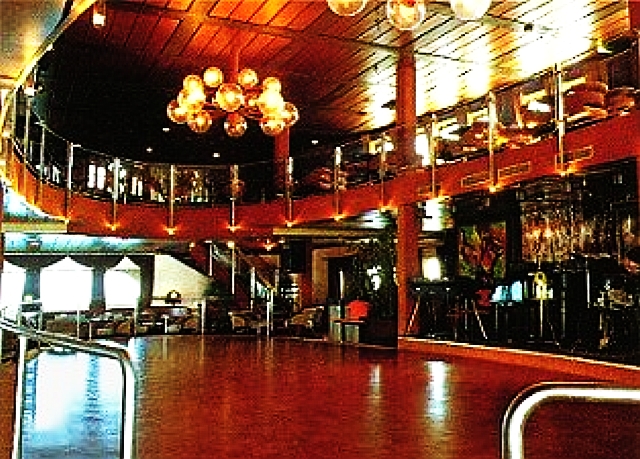
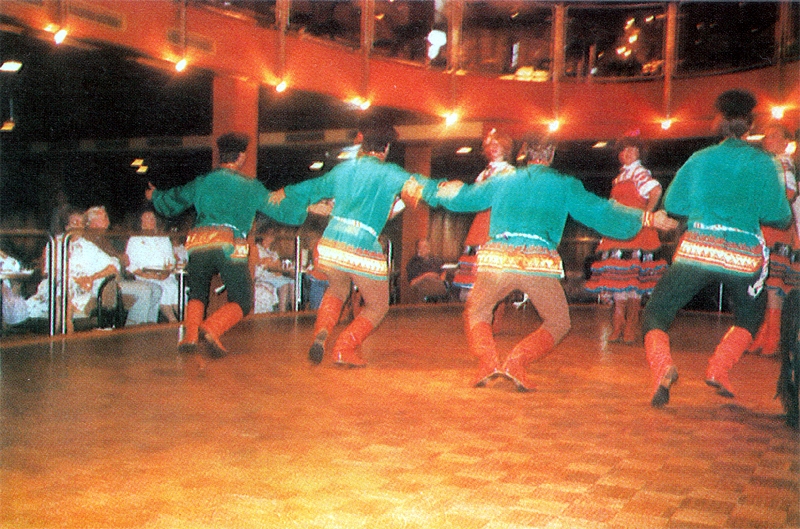
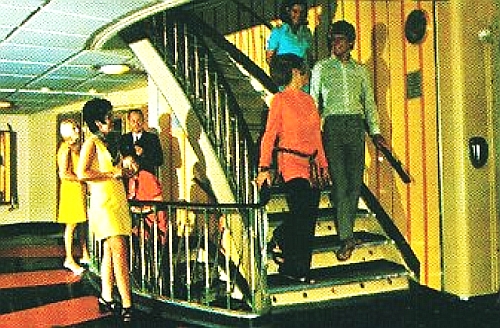
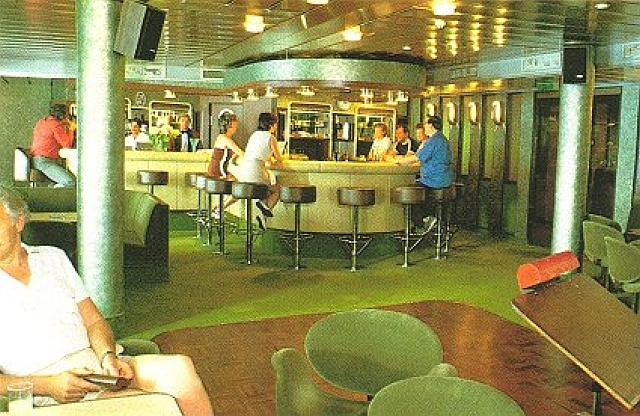
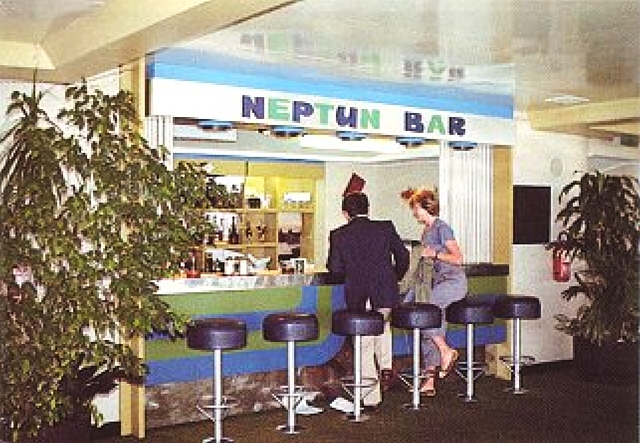
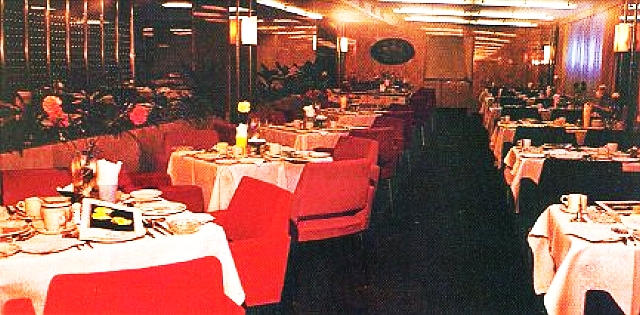
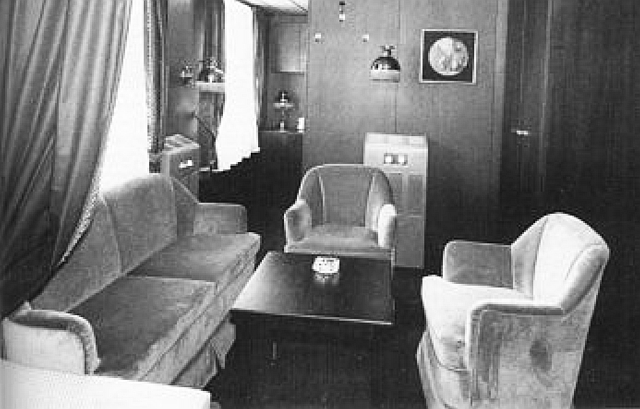
Considering the Australian Government had
banned Russian shipping to the country, New Zealand had not followed Australia
in doing so, thus the Mikhail had made an around the world voyage visiting New
Zealand ports just prior her major refit and just after. As soon as
MS Mikhail Lermontov’s Final Voyage:
In mid December 1985 both the Alexandr Pushkin
and Mikhail Lermontov arrived in
The MS Mikhail Lermontov departed at 8 p.m. in
February 7, 1986 and she slowly headed towards Sydney Heads and then she sailed
through them as passengers were having a joyful meal in the dinning room, yet
none would be on this delightful ship returning through these same heads into
Below is the official CTC Cruises brochure cover and itinerary of that fateful cruise as shown in the brochure.
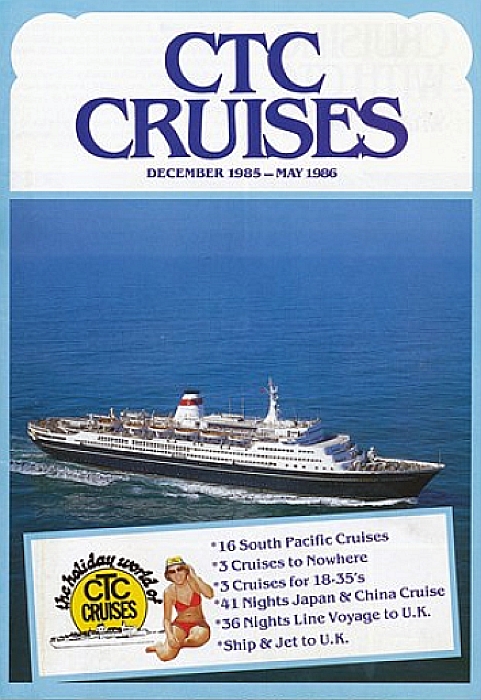
This
is the actual brochure cover containing the cruise concerned!
The
MS Alexandr Pushkin is shown on the cover
MS Mikhail Lermontov – 14-night New
Zealand Cruise Number 561 – February 7, 1986.
Port Arrive Depart
Auckland 09 AM
- Feb 12 07 PM - Feb 12
Tauranga 07 AM - Feb
13 04
PM - Feb 13
Picton 08 AM -
Feb 16 03 PM - Feb 16
(Cruising
only) Feb 16
Doubtful,
Thompson
&
Milford Sounds (Cruising)
Feb 18
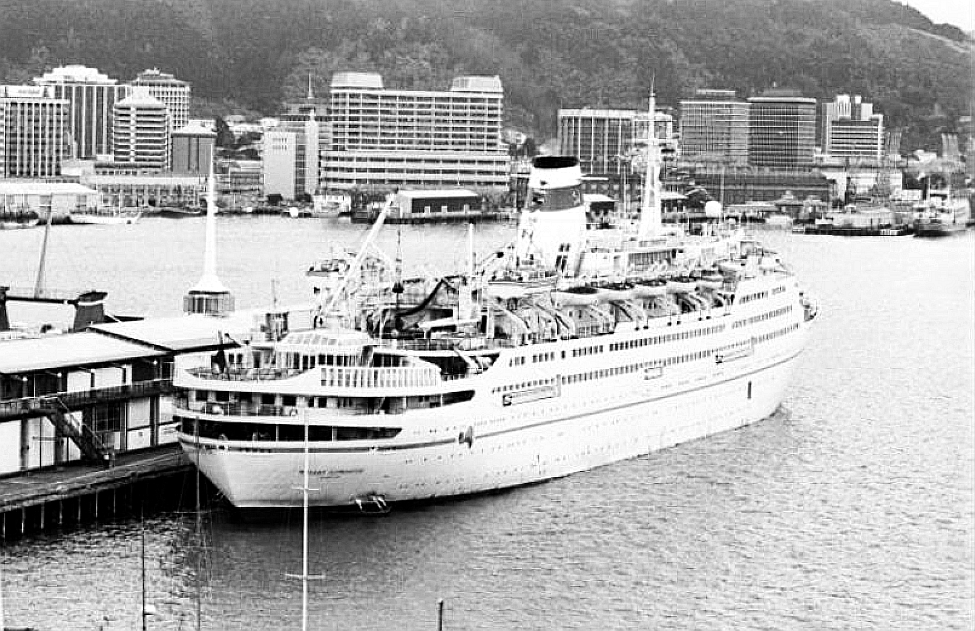
The
Mikhail Lermontov is seen at the Overseas Passenger Terminal at
Photograph by
local Newspaper Evening Post photographer John Nicholson
As she sailed there were a total of 743 people were on board. Of the 372 passengers, 327 were Australians including 5 children, 36 British, 6 Americans, 2 Germans, and one New Zealander. Of the 348-crew members, 330 were Russian and 18 British staff. Another 9 were Australians and 13 were British CTC staff members in transit.
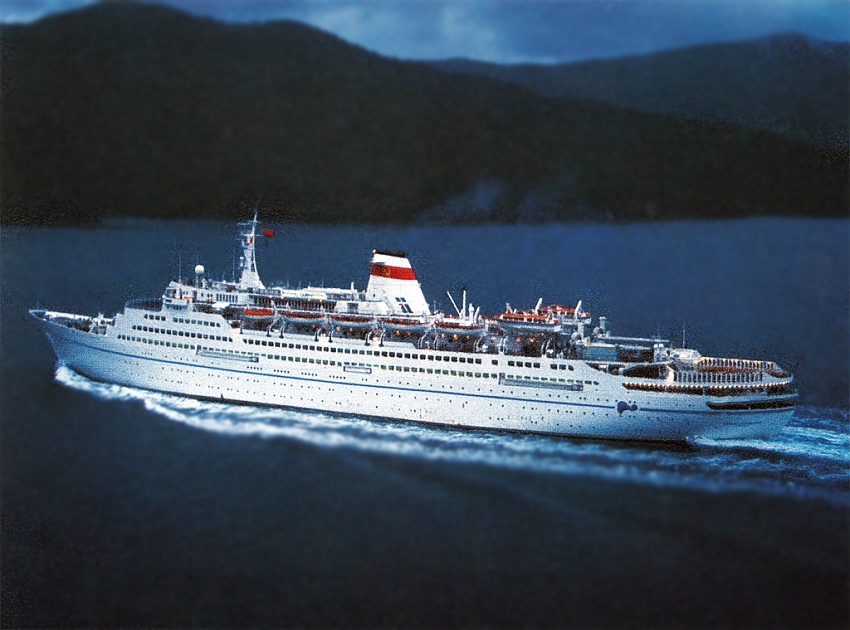
Here
we see the Mikhail Lermontov just after 6.00 a.m. on the waters of the Marlborough
Sounds heading for Picton
But
tragically this would also be her very last day afloat for some 16 hours later
she would be on the bottom of the sea
Photograph by
CTC Cruises
A very tired Picton pilot, Captain Don Jamison who was also the Picton harbourmaster boarded and he remained aboard the ship instead of leaving her at Long Island for this way he would be able to pilot the ship into Milford Sound. As Captain Jamison piloted the ship out of Picton and the Sounds meant that his presence and his vast knowledge of the region, this should have assured the safety of the Mikhail Lermontov, but right from departure there were a number of mishaps., including the ships stern touching the bottom at departure, bad start Mr. Pilot!-
As passengers were having fun and relaxing
after all their various shore tours, etc, they were having drinks and enjoying
some the light entertainment. Having seen all the scenery many were no longer
interested looking out, whilst others went to their cabins for a rest. But for a
couple of ship enthusiasts, they noticed at one time that the ship had gone
between the Lighthouse and the end of Cape Jackson instead of clearing the
rocky reef that extended past Walker Rock and it was clearly shown on the
chart. The Mikhail Lermontov was drawing around 8.2m (27ft) and Captain Jamison
claimed his understanding of the depth in the channel to be 10.6 to 12.29m (35
to 40ft). It can be seen from the above chart that there was ample room for the
Mikhail Lermontov to have passed through the channel had she missed the major
rock pinnacles. However it would have been a very foolhardy course to take for
anyone aware of the presence of the rocks.
Captain Jamison had that great desire to give
the passengers a good close up view and narrate some historic facts, including
the very place where Captain Cook landed and so much more, when Captain
Vorobyev had finally left the bridge to shower and get ready for dinner as he
had to join the Captains table that night, he had instructed Jamison after
another too close encounter, not to sails too close to shore, and he had
promised not to do so, a promise he would not keep! Having sailed into Somehow
he believed that the passage at
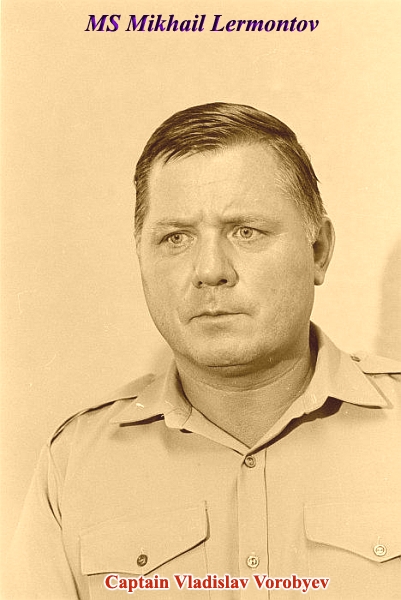 _____
_____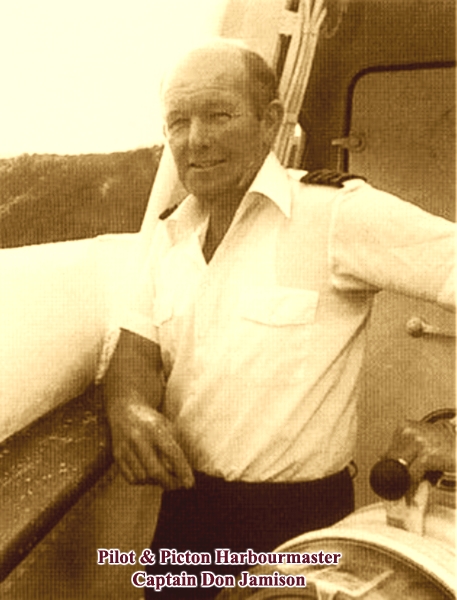
still
wonder why this disgraced pilot, Don Jamison was permitted to retain his
captain’s ticket?
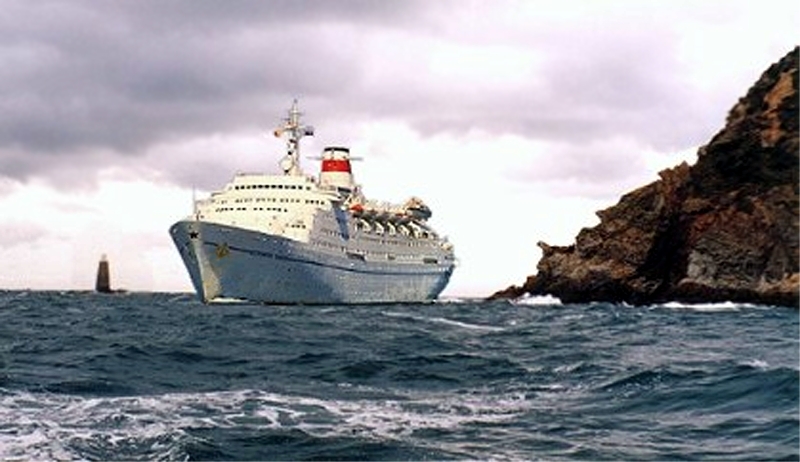
An
Ocean going Captain would never have done anything that stupid and placed his
ship and all his passengers and crew in danger!
At 5.37 p.m. there was a thud whilst she had been sailing at 15 knots, for she had struck rocks on her port side just below the waterline, near the top of her double bottom tanks. Suddenly the ship commenced to list to starboard as the water flooded through a 40 foot long gash in the hull, penetrating three water-tight bulkheads.
Captain Vorobyvev dashed to the bridge and ordered the ship to be beached but it was not possible, the attempt to drop anchor also failed due to the electrical system having suddenly been effected by water down below, thus everything soon failed including the ships engines, and thus the ship drifted into deeper water. Later, maritime officials stated that Captain Vorobyvev’s decision to put passenger safety before saving the ship saved the lives of all on board! For when the tragedy had ended every one was saved, although there were some eleven injuries, but a 33-year-old Russian engineer, Pavel Zagladimov tragically died as it seems that he went down with the ship. Most of those who were hurt were the elderly who jumped into the sea or even a lifeboat.
The first to arrive at the scene were two
fishing boats, then the L.P.G. tanker Tarihiko, even though it had received it
had received that no further assistance was required, Captain Reedman decided
to check it for himself. Even though the sea had gotten somewhat rough, she
managed to take aboard a good 356 passengers as well as 164 crew, after which
she headed for the
The
HMNZS Taupo commanded by Lieutenant Batcheler arrived and she would check out the area and it was arranged for the shoreline to be searched. It was still very dark and it was raining heavily therefore it was difficult penetrating the darkness with the ship’s searchlights. No matter what, they struggled throughout the night, searching the area to locate any lost people in the water, or on rafts or in lifeboats that may have been swept away in the wind and with the tide.
The crippled cruise ship took on a 12° list and drifted into Port Gore where Captain Vorobyev tried to beach his ship. But by 10.15 p.m. she was listing 40° to starboard and at 10.27 p.m. the once magnificent MS Mikhail Lermontov foundered, sinking by the bow and went to the bottom of the sea.
Let
us look at the map of that tragic final voyage
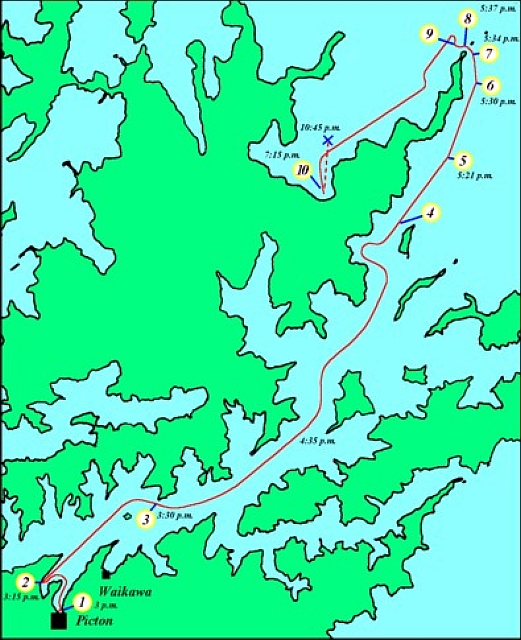
Picton
pilot Captain Don Jamison is on the bridge and takes charge of the ship upon
departure
These
are the events of a very weird voyage through the Marlborough
Sounds
1. The ship
was almost grounded at the stern when leaving Picton.
2. Vessel
was again almost grounded at the bow in
3. The ship
passes fat too close to Golden Point when Jamison takes an unusual course west
of
4. Jamison
again takes a strange course west of
5. First
turn towards
6. Second
turn towards
7. Final
turn committing the vessel to sail through the
8. Point
of impact and Jamison orders a further turn to port immediately afterwards.
9. Captain
Vorobyev arrives on the bridge, takes over and he turns the ship to starboard
and away from rocks.
10. With a
12-degree list the ship limps to this point and is beached. Yet with water
flowing in, all power is lost.
Anchors
cannot be dropped, thus the ship drifts out into deeper water and sinks at the
position marked by X.
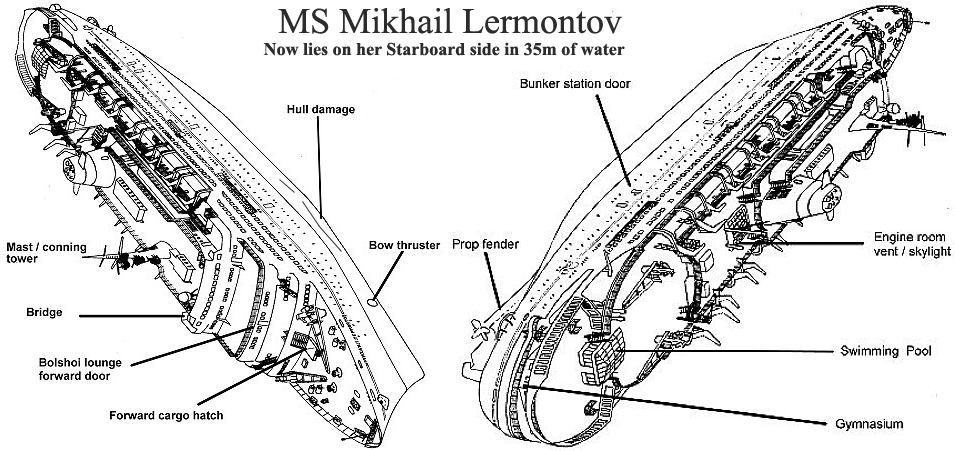
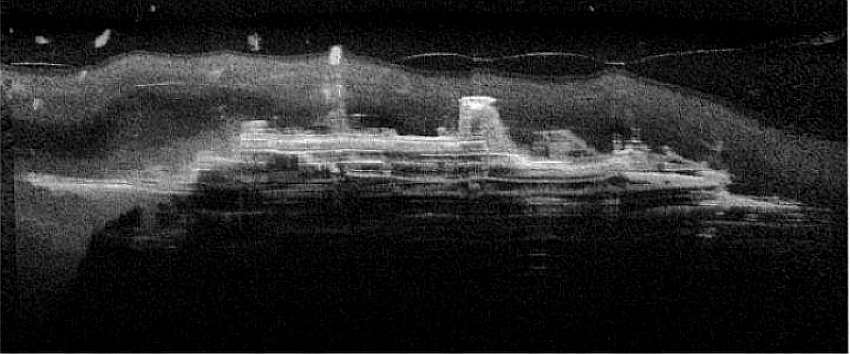
Epilogue of the Sinking:
It amazes me that there have been so many
stories regarding the sinking of this superb ship. Some are that the
“Russian Captain entertained the Pilot at lunch and even on the bridge
with Vodka and by the time the ship left at 3.00 p.m. they were pretty blotto,
mate. And that was the main reason she sank.” What utter rubbish, I know
for a fact that Captain Vladislav Vorobyev had a very strict rule for himself
and for every member who was listed to work on the bridge prior to and during
work, that only non-alcoholic rinks where permitted to be consumed, and that
included all pilots. If a pilot was found to have alcohol on his breath he
would be put off his ship, it was as simple as that! He was a very strict man,
but a good and a honest Captain and the crew liked him, even though he was a
relief Captain, for the ships regular Captain, Captain Oram Organov was already
in
It is so sad that there have been so many
stupid stories, but there has been one simple fact and that was a confession,
knowing full well that the person who was responsible, could not be prosecuted
for what occurred, and he could even continue in his job. For the mad
In due course there were even attempts made to
prove that Captain Jamison had handed control of the ship back to Captain
Vladislav prior to the collision, and everything was done in
This is an interesting and a factual report
from the
“The Soviet authorities have handed over
the log books from the Lermontov today to the New Zealand Government inquiry
into the sinking … Six Australian passengers were still in hospital in
Next came an important report from Mr. Richard Prebble, New Zealand’s Minister of Transport twenty years after the fateful event.
February 16, 2006: Richard Prebble,
Amazingly it was an “oversight” in
New Zealand’s law at that time, which meant that New Zealand registered
pilots working aboard foreign registered ship could not be prosecuted in any
shape or form, which was very wrong, for min this case, Jamison was guilty of
running this fine ship on the rocks because of sheer stupidity, and blaming
tiredness is never an excuse!
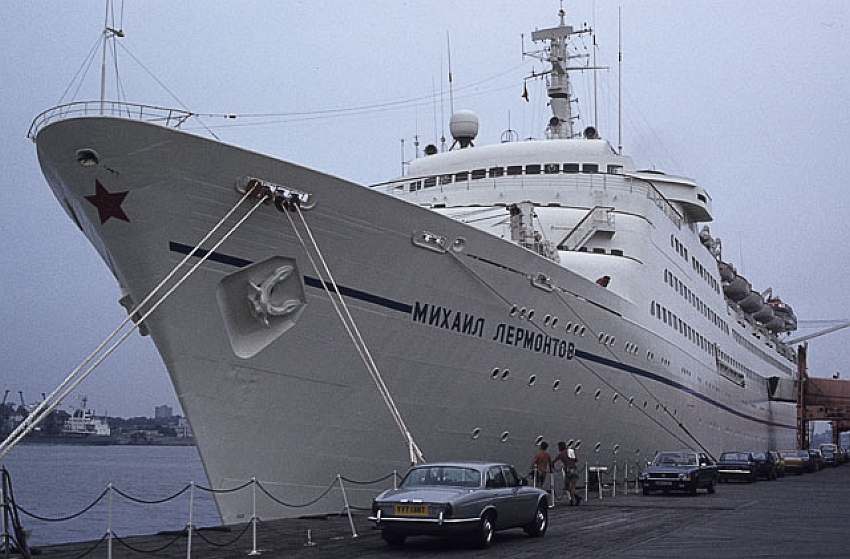
The
Mikhail Lermontov is seen here in better days at Tilbury of the finest and
beautiful cruise ships afloat!
She
had a sad end, but she was and remains a greatly loved ship to this day!
Although I have a great deal more to the story of the fateful day, but sadly, due to my health and poor eyesight I am unable to add it at this stage. This feature has taken a great deal of time to be completed, and as I do not have an editor at this time, I am sorry for any errors that may well be found!
Reuben Goossens - Retired.
1.
Ivan Franco / 2. Alexandr Pushkin / 3. Taras Shevchenko / 4. Shota Rustaveli /
5. Mikhail Lermontov.
Engines: 7 Cyl Sulzer-Werkspoor
diesels. 21000 BHP
Visit the all New Marco Polo 2016 Review
“Blue Water Liners sailing to the distant
shores.
I watched them come, I watched them go and I watched them die.”
****************************
Visit our ssMaritime Main INDEX
Where you will
discover over 700 Classic Passenger & Passenger-Cargo Liners!
ssMaritime.com & ssMaritime.net
Where the ships of the
past make history & the 1914 built MV Doulos Story
Please Note: ssmaritime and associated sites are 100% non-commercial and the
author does not seek funding or favours and never have and never will.
Photographs
on ssmaritime and associate pages are either by the author or from the author’s private
collection. In addition there are some images and photographs that have been
provided by Shipping Companies or private photographers or collectors. Credit
is given to all contributors, however, there are some photographs provided to
me without details regarding the photographer or owner concerned. Therefore, I
hereby invite if owners of these images would be so kind to make them-selves
known to me, my email address can be found at the bottom of the page on www.ssmaritime.com,
in order that due credit may be given.
ssMaritime is owned & © Copyright by Reuben
Goossens - All Rights Reserved
